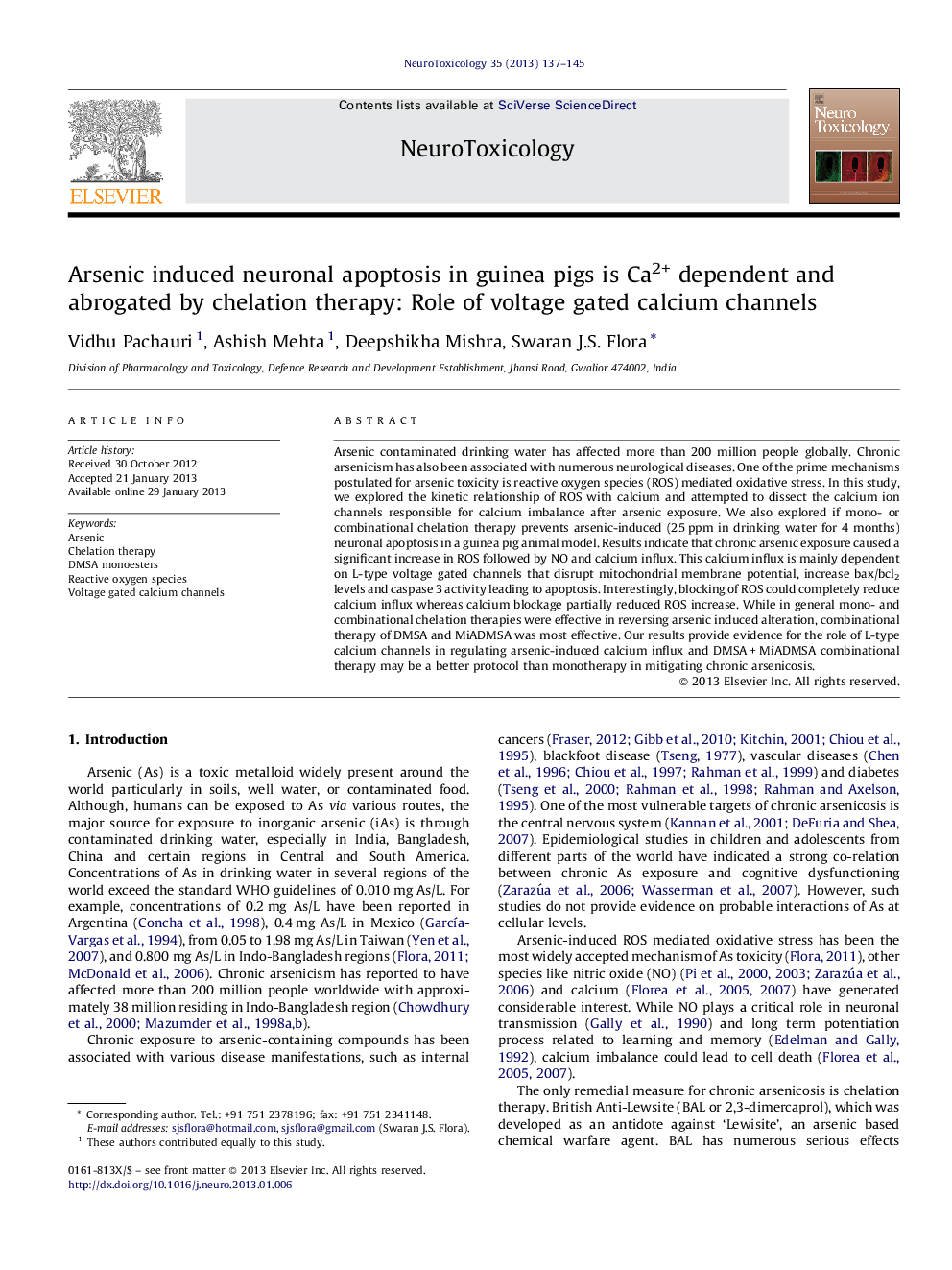| Article ID | Journal | Published Year | Pages | File Type |
|---|---|---|---|---|
| 2589816 | NeuroToxicology | 2013 | 9 Pages |
Arsenic contaminated drinking water has affected more than 200 million people globally. Chronic arsenicism has also been associated with numerous neurological diseases. One of the prime mechanisms postulated for arsenic toxicity is reactive oxygen species (ROS) mediated oxidative stress. In this study, we explored the kinetic relationship of ROS with calcium and attempted to dissect the calcium ion channels responsible for calcium imbalance after arsenic exposure. We also explored if mono- or combinational chelation therapy prevents arsenic-induced (25 ppm in drinking water for 4 months) neuronal apoptosis in a guinea pig animal model. Results indicate that chronic arsenic exposure caused a significant increase in ROS followed by NO and calcium influx. This calcium influx is mainly dependent on L-type voltage gated channels that disrupt mitochondrial membrane potential, increase bax/bcl2 levels and caspase 3 activity leading to apoptosis. Interestingly, blocking of ROS could completely reduce calcium influx whereas calcium blockage partially reduced ROS increase. While in general mono- and combinational chelation therapies were effective in reversing arsenic induced alteration, combinational therapy of DMSA and MiADMSA was most effective. Our results provide evidence for the role of L-type calcium channels in regulating arsenic-induced calcium influx and DMSA + MiADMSA combinational therapy may be a better protocol than monotherapy in mitigating chronic arsenicosis.
► We studied if L-type calcium channel regulate calcium influx by As and the role of DMSA and MiADMSA. ► Combined chelation prevents arsenic-induced mitochondrial dependent apoptosis. ► ROS and calcium influx through L-type calcium channel, blocked by the chelation.
